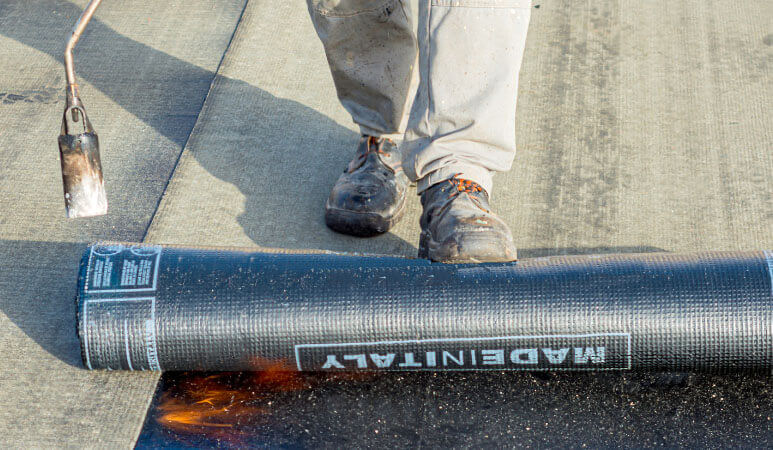Roofs are an important part of any building, and their durability and lifespan are crucial to the structure’s overall stability. One of the most common types of roofing materials is asphalt, which is used in various applications, including shingles, roll roofing, and modified bitumen. Below, we’ll take a closer look at modified bitumen roofing, including what it is and how to install it.
What Is Modified Bitumen Roofing?
Modified bitumen roofing is a type of asphalt roofing that uses modified asphalt to create a more durable and weather-resistant surface. This type of roofing is often used on commercial and industrial buildings, as it can withstand heavy traffic and extreme weather conditions.
In most cases, modified bitumen roofing is installed in a two-layer system, with the first layer being a base sheet and the second layer being an asphalt-based cap sheet. The base sheet is typically made of fiberglass or another type of reinforcing material, while the cap sheet is made of asphalt that has been modified with a plastic or rubber-like material.
How to Get Bitumen Roofing Installed
Installing modified bitumen roof coating is a complex process that only experienced roof installation contractors should only attempt. The process involves:
Cleaning the Installation Area
The first step is to clean the installation area. This includes removing debris, dirt, or other materials that could interfere with the installation process. When cleaning the area, use a mild soap and water solution to avoid damaging the roof.
Preparing the Substrate
Next, the substrate must be prepared. The substrate is the surface on which the roofing material will be installed. In most cases, the substrate will be a plywood or OSB board. If the substrate is not properly prepared, it could cause the roofing material to fail.
Preparing the substrate involves checking for and repairing any damage to the substrate. Once the substrate is prepared, a primer should be applied to help the roofing material adhere to the surface.
Rollout and Adjusting the Roofing Material
After applying the primer, the roofing material can be unrolled and cut to size. The material should then be adjusted to fit the area. Once the material is in place, it should be fastened to the substrate using nails or screws.
Applying the Modified Bitumen Roofing
After the rollout, the bitumen roof coating can be applied. The roofing material comes in rolls and is applied using a propane torch. Since the propane torch can be dangerous, it is important to have a roof installation contractor apply the roofing material with gloves.
The torch is used to heat the roofing material, which helps it adhere to the substrate. It would be best if you ran the torch over the material in a back-and-forth motion to evenly distribute the heat. Be sure to apply even heat to avoid damaging the roofing material.
Also, you should press the seam between the sheets of roofing material. This will help to create a watertight seal. After the modified bitumen roofing has been applied, a mineral-based finish can be applied to help protect the roof from sunlight and weather damage. Also, you should regularly call in for roofing maintenance services to ensure that your roof stays in good condition.
Installing modified bitumen roofing is a complex process that experienced professionals should only attempt. Grace Roofing & Sheet Metal is a leading modified bitumen roofing provider that prides itself on providing quality products and services like roofing maintenance services. Contact Grace Roofing & Sheet Metal today to learn more about our modified bitumen roofing services.

